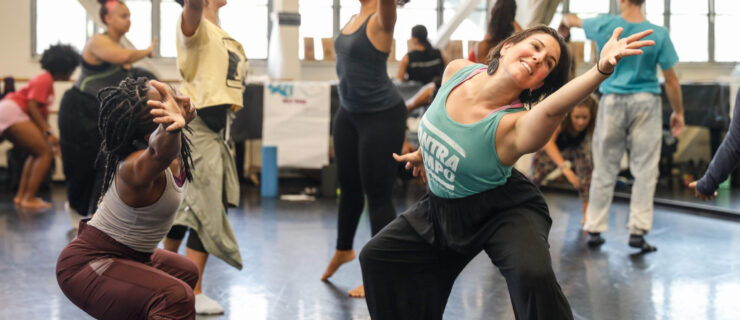Curtain Up
During the years I taught in colleges, I noticed that in technique class, the boys came right down front to stand boldly in the teacher’s immediate vision. The girls tended to hover at the back of the studio. The young men were so sure of themselves—even the ones with no previous experience—and the women were often clouded by self-doubt. The same difference played itself out in composition classes: The boys launched into making dances, while the girls worked inch by inch to come up with a single phrase or idea. Of course there were always a few exceptions—those wildchild girls, the Pippi Longstocking types who couldn’t be held back. But the basic gender divide was there.
The imbalance gets further exaggerated because of the relative rarity of men in class. The minute a boy walks into a dance class, he is treated like gold. The girls see this, and it reinforces their insecurities. It’s heartbreaking, and it’s happening even in modern dance, created by women. But is modern dance still a woman-centered art?
Many of us have noticed that even today, or again today, men are getting the lion’s share of opportunities, funding, and recognition. When you look at the rosters of choreographers chosen for plum gigs like Jacob’s Pillow, The Joyce Theater, Brooklyn Academy of Music, NY Choreographic Institute—even the current New Works Festival of San Francisco Ballet (see page 50)—they are often 80 or 90 percent male artists or male-led companies.
Is this a result of nature or nurture? What are the factors that cause such differences in perception and behavior? More to the point, what can we do about it?
Recently a group of women associated with Barnard College started the Sugar Salon (see “New York Notebook,” Oct. 2006) to encourage and nurture women choreographers. And a few companies like American Repertory Ballet have offered special initiatives for women choreographers (see “Choreography Opportunities,” page 48). For our part, we decided to devote this year’s Choreography Issue to women.
First, we chose the young and daring Aszure Barton for our cover story. Next we interviewed 10 very individual women who have sustained long careers. And on our “Letters” page, you will see readers’ answers to our question, “Who is your favorite female choreographer?” Finally, we collected names, at first haphazardly but then more deliberately, of women choreographers all over the world. Gathering them from press releases, flyers, websites, and colleagues, we reached 400 before we stopped to take a breath. I know there are at least another 400 out there. If you know of the name of a professional woman choreographer who is not mentioned on page 33, please send it to me, and we’ll keep a running list on our website. Then, in the future, when any presenter or artistic director asks, Where are the women choreographers, they will know where to look.




